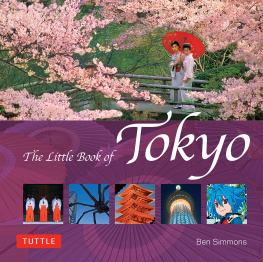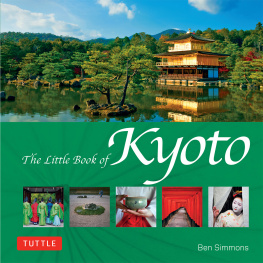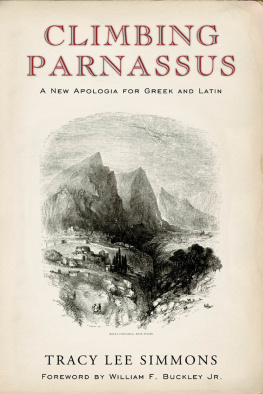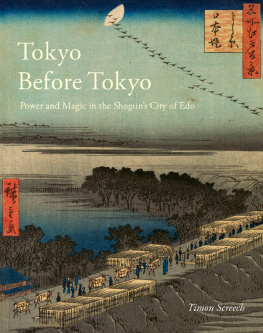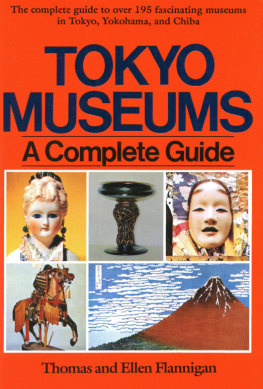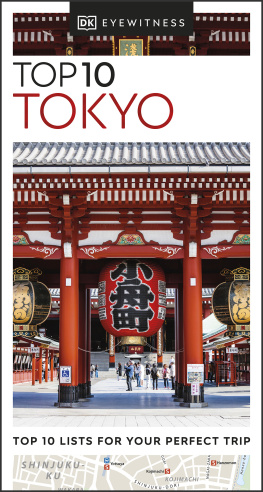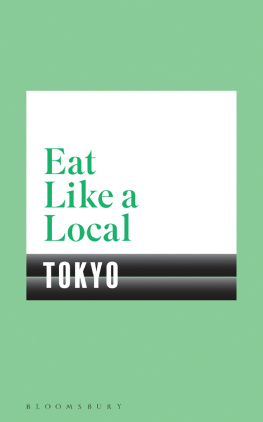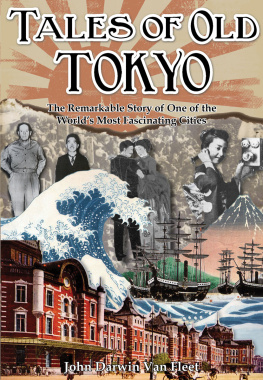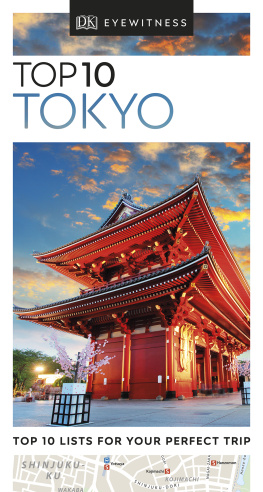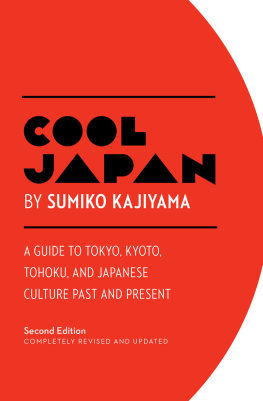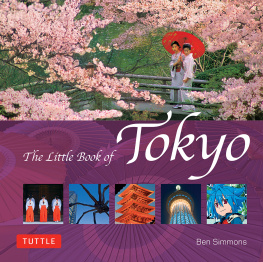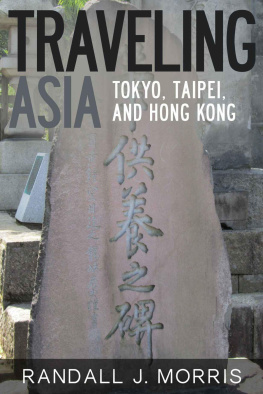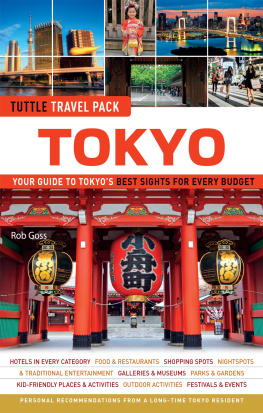
Tokyo Tower and twilight cityscape matrix.
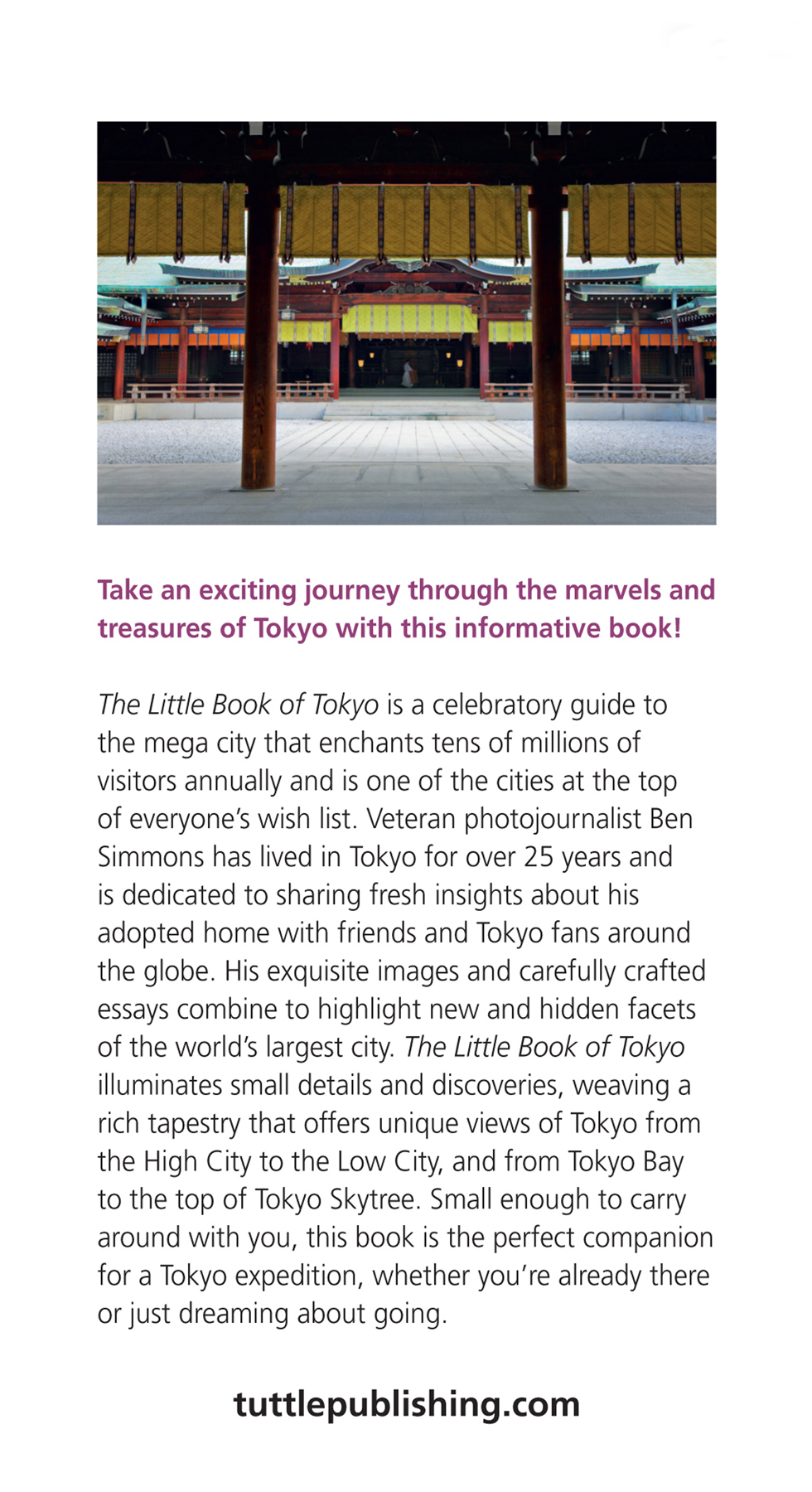
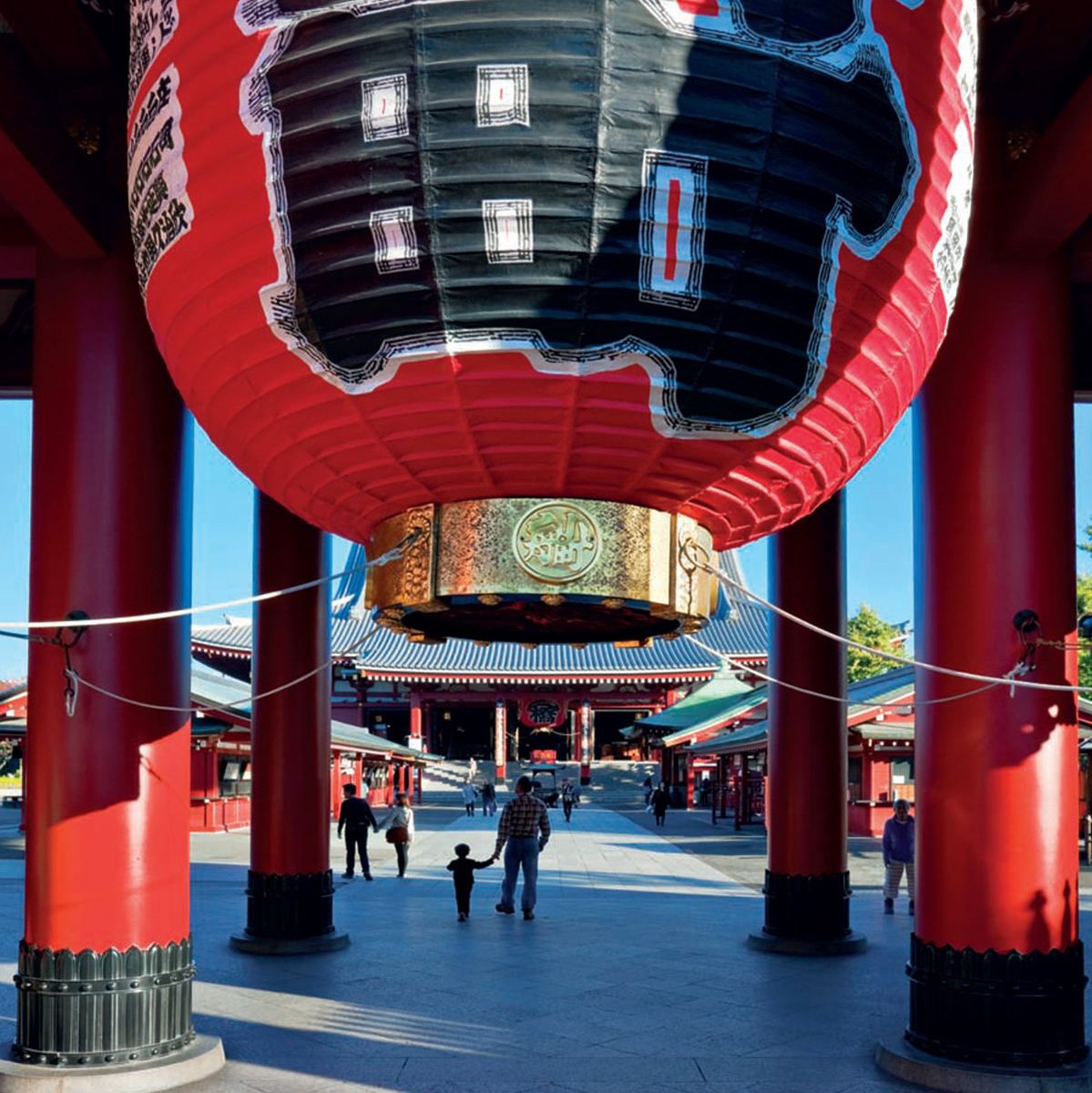
Hozomon Gate at Senso-ji Temple.
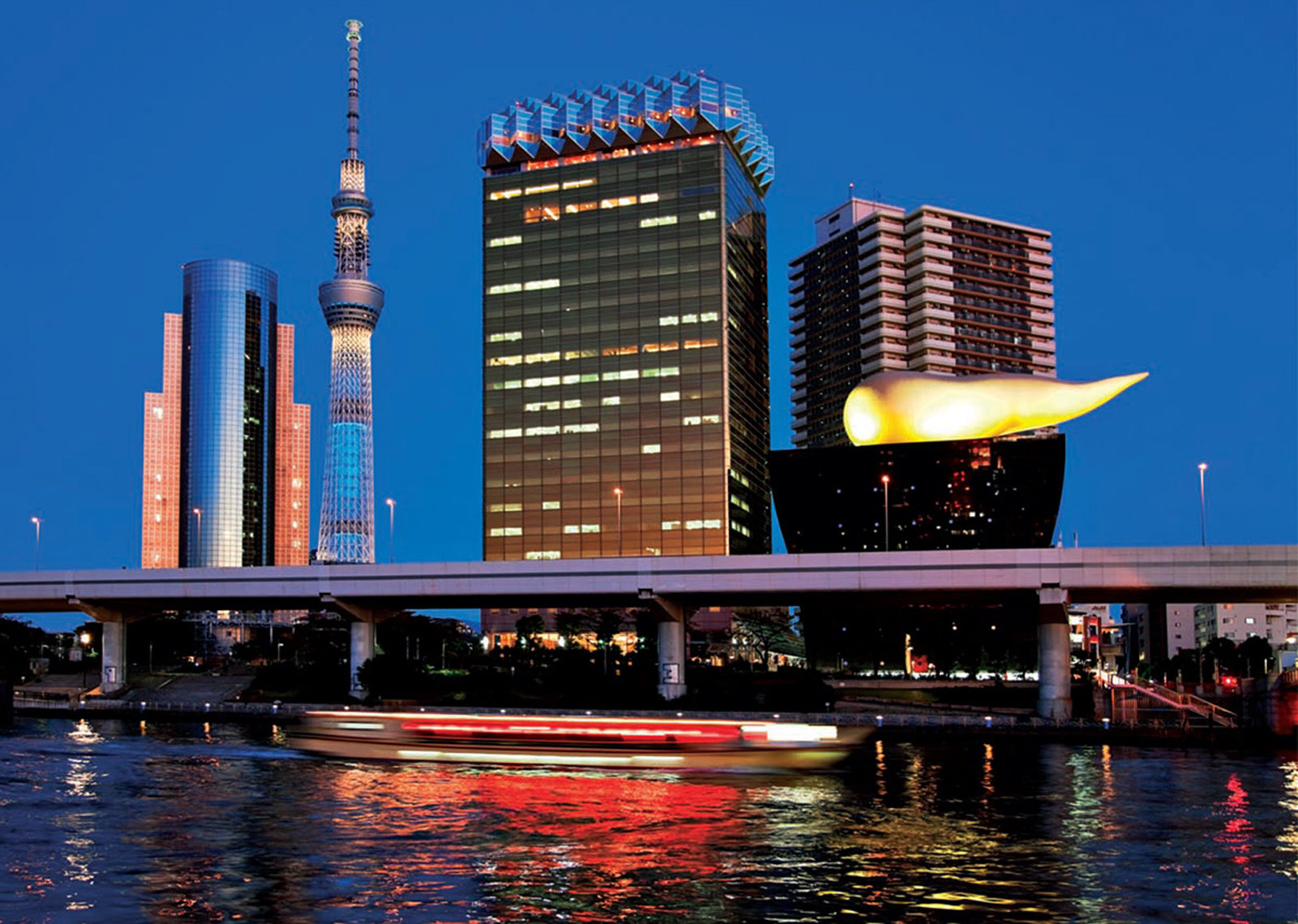
Sumida River at Asakusa.
The Little Book of
Tokyo
Ben Simmons
TUTTLE Publishing
Tokyo | Rutland, Vermont | Singapore
CHAPTER 1
THE SPIRIT OF TOKYO
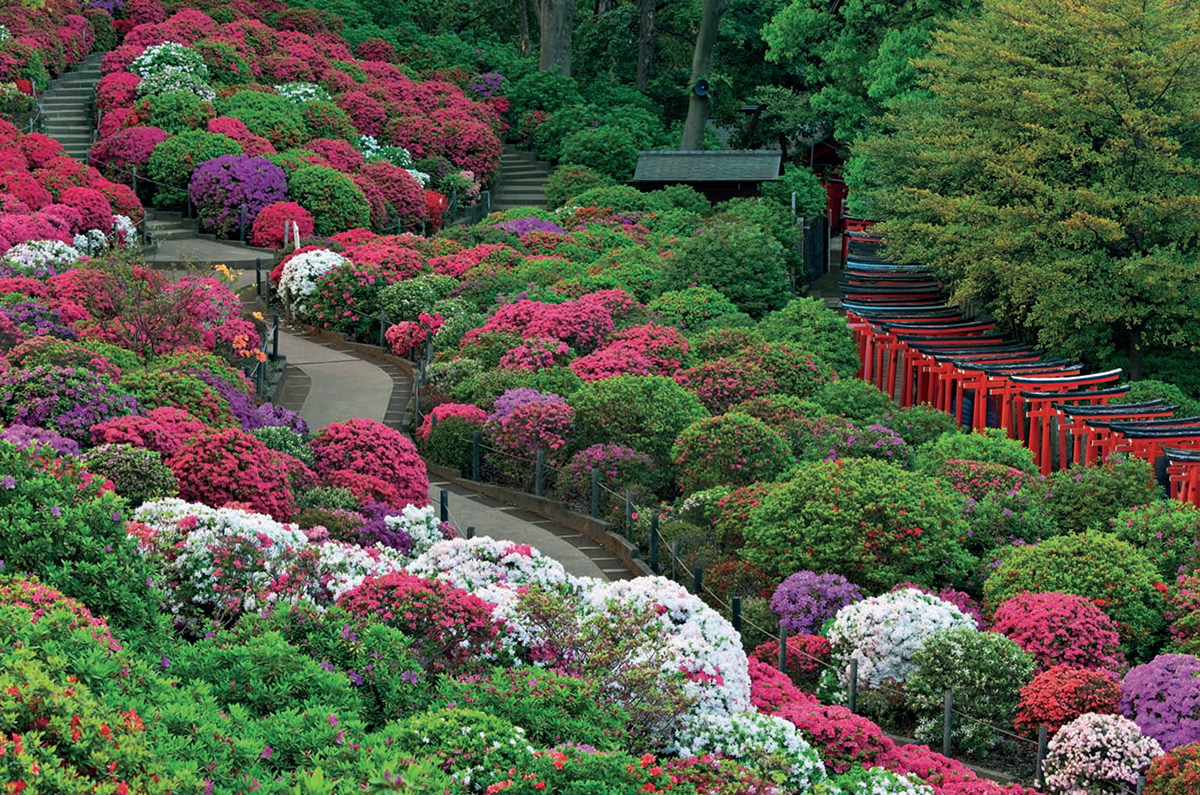
A tunnel of torii gates through Nezu Shrines azalea garden.
Tokyos vibrant spirit is built around a core of native Shinto blended with imported Buddhist and Christian faiths shaped over centuries, but indubitably spiced heavily with the lasting influence of Edo culture and the unbounded energy of non-stop migration from all points of the archipelago. Migrants to the city have always quickly adjusted, adopting the new mores, manners, and sense of superiority the capital engenders. Edo, renamed Tokyo in 1868, readily absorbed the newcomers and also embraced a steady stream of festivals year round, with ritual visits to hundreds of shrines and temples throughout the city.
Edokko, the children of Edo-born parents, sprang from merchants, artisans, moneylenders, and shop owners, and were known to be proud, assertive, direct, impatient, and fun lovingbut with sharp mercantile skills. The spirit of modern Tokyo is mercantile beyond measure, with friendships and life itself centered on work for adults, serious school for children, and hyper-shopping for all. The citys spirit moves everyone and everything through intricate patterns at a blurring speed and with astonishing accuracy. Food, fun, and entertainment in Tokyo are as carefully scheduled as any company workforce or clockwork city train.
Shinto Shrines
The Agency for Cultural Affairs lists nearly 1,500 Shinto shrines in Tokyo, but there are countless other small unrecorded shrines tucked away on the citys back streets. The shrines for Japans indigenous Shinto faith in Tokyo range from the largest, most sacred Meiji Jingu, with its solemn forest of 100,000 donated trees, to tiny neighborhood shrines tended by local residents. Shintos kami spirits are tied to natures elements, and many of Tokyos shrines were founded in spots of natural beauty, helping to preserve green pockets sprinkled around the city, remnants of the natural landscape. Most shrines have distinctive torii gates, a font of running water for purification, guardian komainu lion-dogs or kitsune fox statues, and cloud gray stone toro lanterns.
Meiji Jingu is a memorial shrine for Emperor Meiji, who marked the beginning of Tokyo and modern Japan, and his consort Empress Shoken, a revered advocate for charity and womens education. Located next to the trendy teen town of Harajuku, the shrine staff are kept busy from dawn to dusk reminding visitors that Meiji Jingu is a sacred place. An historic shrine, Yushima Tenmangu in old shitamachi, attracts students with the enshrined God of Learning, and lovers of plum blossoms with its 300 Japanese apricot trees. Tokyos Nezu Shrine hosts an endless stream of visitors when its hillside azalea garden blooms into a sweeping palette of gleaming reds. Asakusa Shrine is overshadowed by the adjacent Senso-ji Temple, but a closer look reveals an original Edo-era shrine that has miraculously survived all of the citys recurrent devastation.
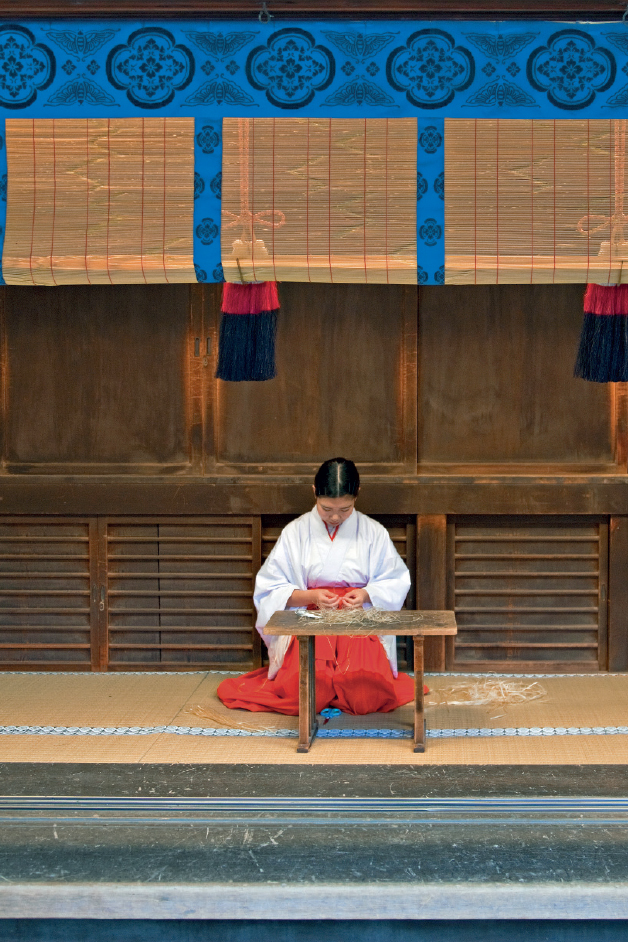
A miko shrine maiden making traditional hair ribbons.
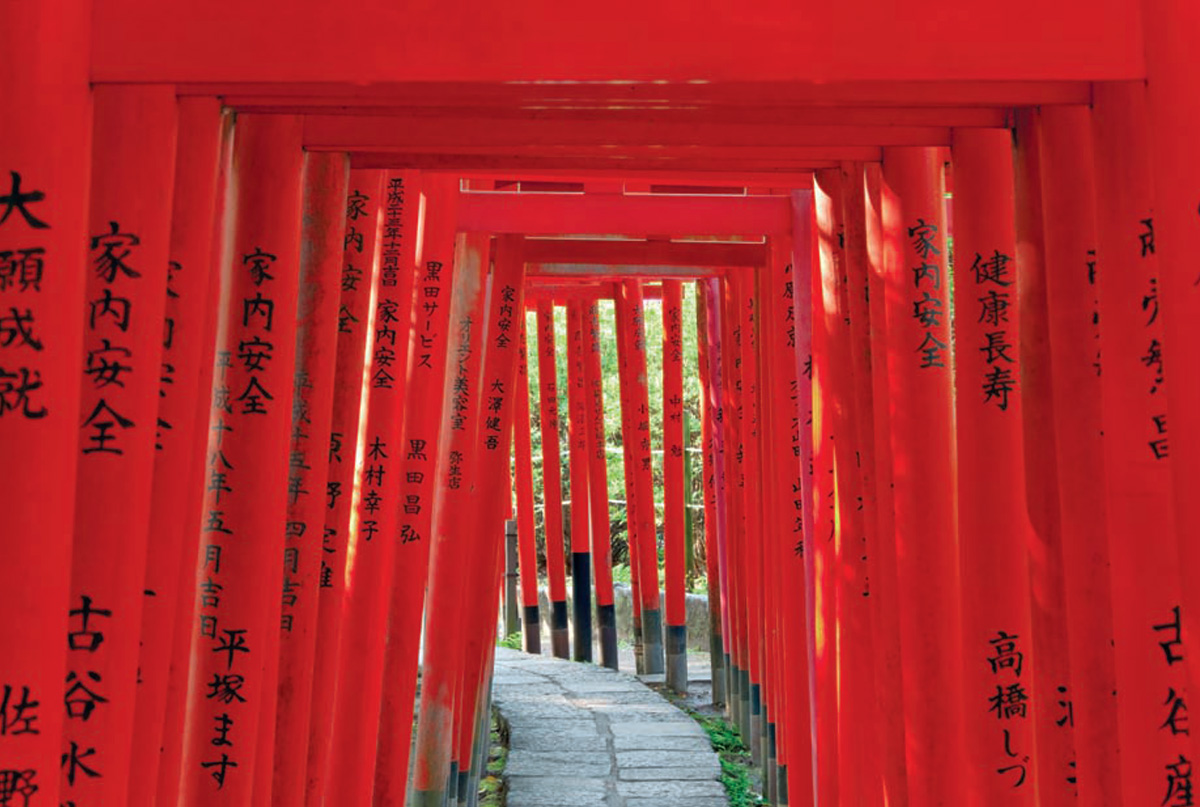
A vermilion path of Shinto torii gates at Nezu Jinja.
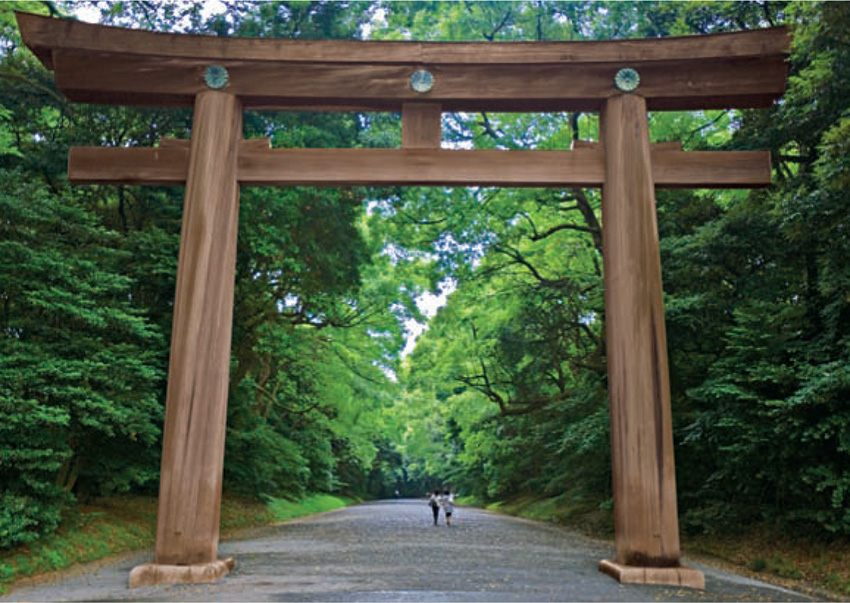
A shrines distinctly simple torii gate symbolizes the entrance into the sacred realm.

A shrines inner precincts are reserved for ritual ceremonies.
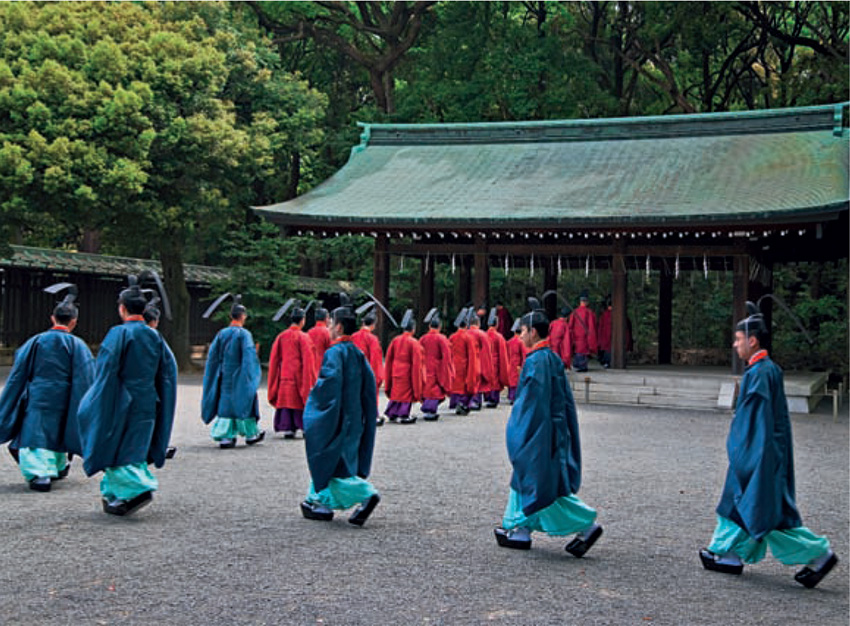
A procession of Shinto priests in ceremonial robes.
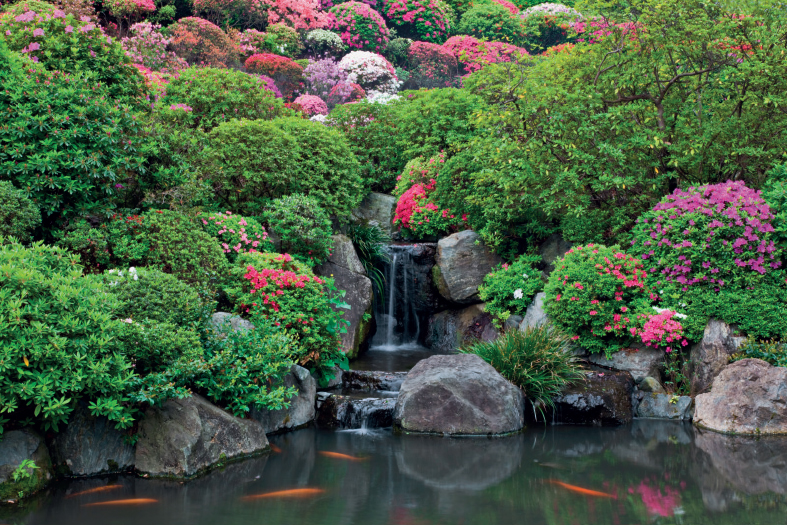
A delicate waterfall and koi carp in the azalea garden pond at Nezu Shrine.
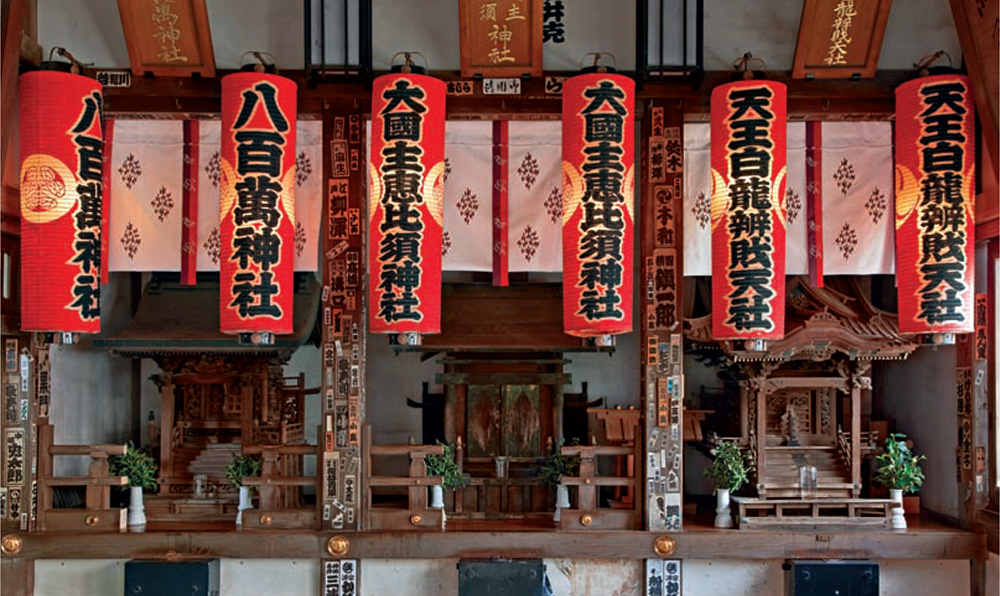
The centuries-old Ana Inari auxiliary shrine at Shinagawa Jinja.
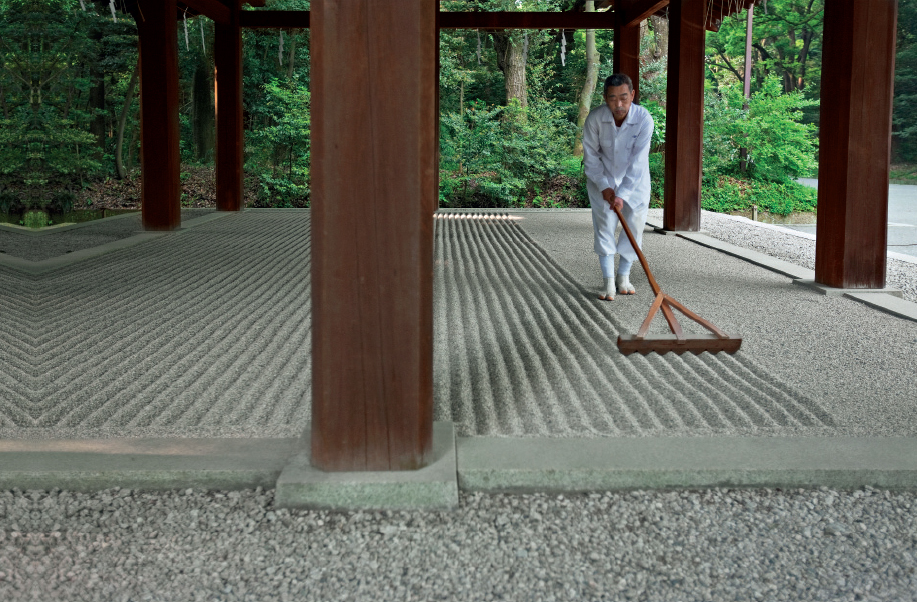
Zen-like preparation for a gathering of Shinto priests.
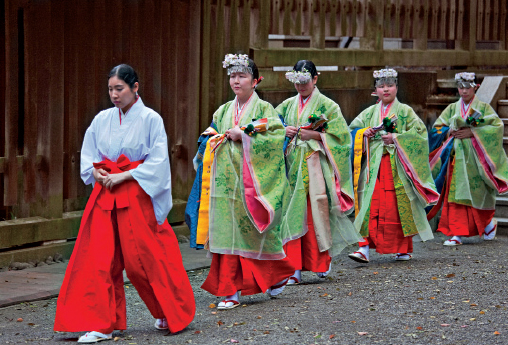
A procession of miko shrine maidens in ceremonial robes.
Buddhist Temples
The venerable Senso-ji is the spiritual soul of Tokyos temples, and Shibamata Taishkuten is the most beautiful gem amongst the citys nearly 3,000 Buddhist temples. Senso-ji in Asakusa has been attracting pilgrims and visitors for centuries, but far fewer venture to the more remote Shibamata district. The kawara tile roofs of many lesser-known temples can beckon from along train tracks and streets in every part of the city. Many Tokyo temples have, unfortunately, forfeited portions of their grounds and gardens to encroaching developments or simply for use as parking space.
Eiko-in Temple must be sought out, squeezed between surrounding buildings in Ryogoku where it was once a more spacious venue hosting sumo matches. Recently, young women visit Eiko-in to rub the face and hand of its bronze sculpture of a lovely Edo courtesan, seeking beauty and good fortune. Sengaku-ji is a Zen Buddhist temple located near Shinagawa, known for the legendary Forty-seven Ronin samurai who are buried there alongside the master they avenged on a snowy Edo evening in December 1702. Sengaku-jis monks are now fighting a losing battle against a construction project right at their temple gate.

Buddhist scholar and monk Tamura Kanji at Enjyu-ji Temple.
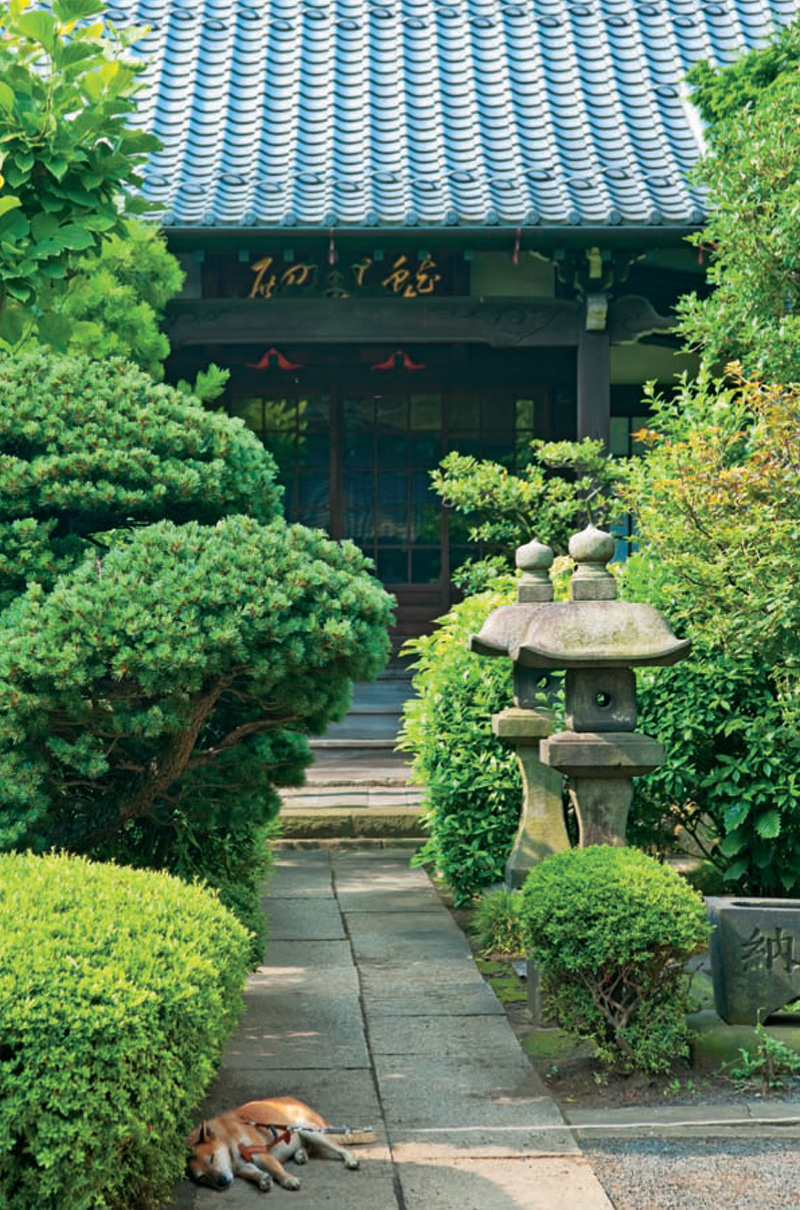
Next page
